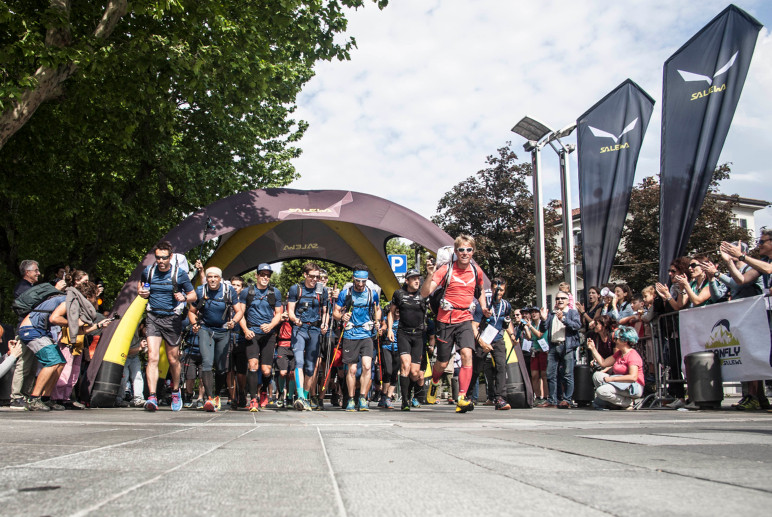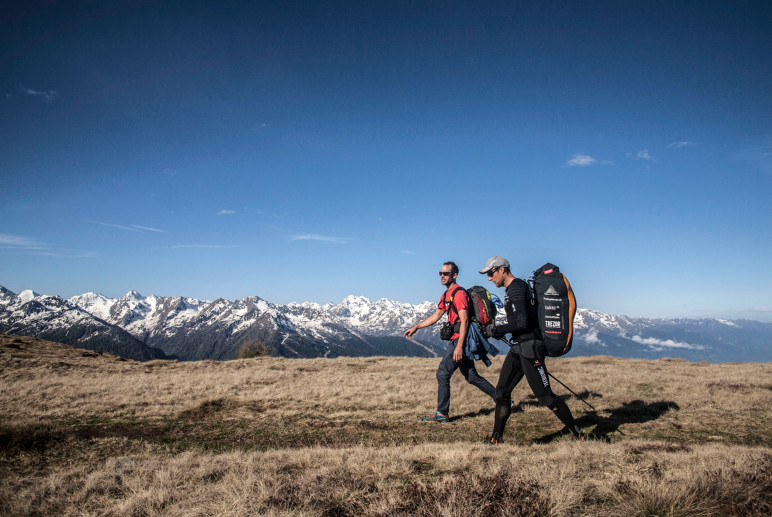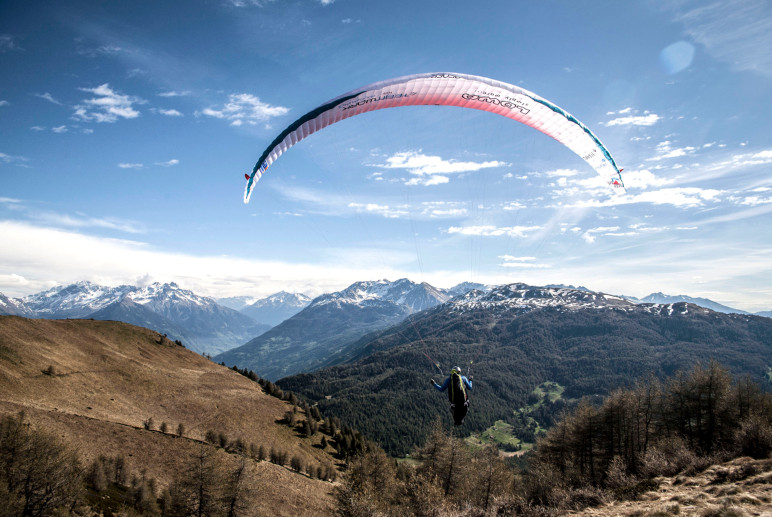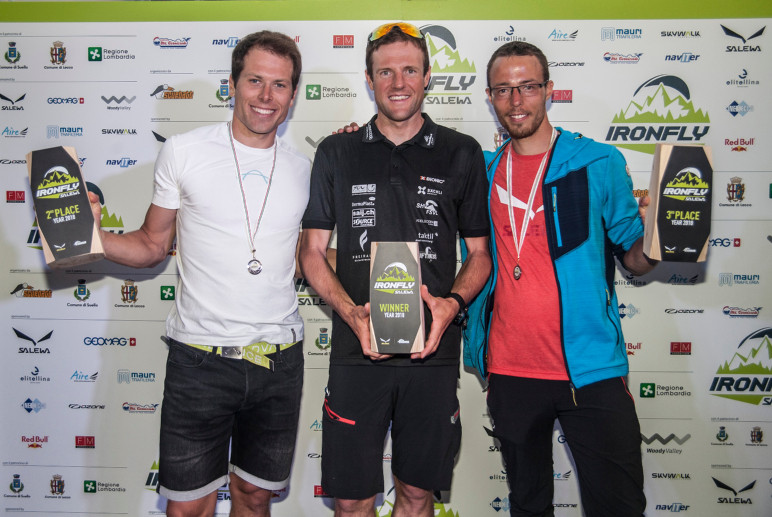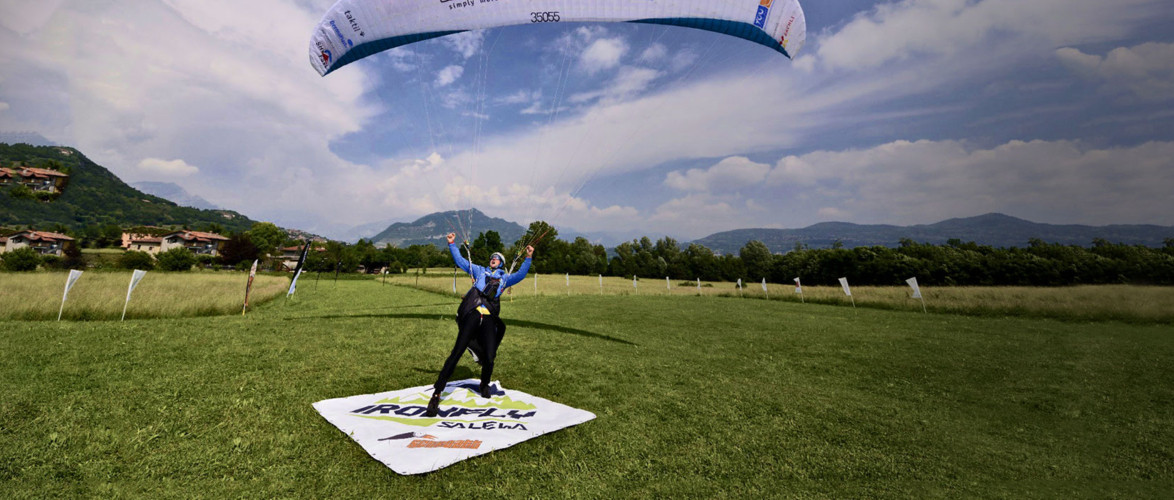IRONFLY 2018 RECAP - Seven hundred and forty-seven. Point six.
When he sets foot on the Club Scurbatt landing field, a well-trimmed lawn fragrant with the scent and characteristic brightness of freshly-mowed grass, we are under the impression that Chrigel Mauer is in no difficulty. He is not even making a sound. The little noise that he does make is probably drowned out by the polite applause, barely disturbing that panorama of rural peace. Like a golf course, kissed by an almost summery sunshine and temperature. The contrast with the jagged mountains and inclement conditions that Maurer and his competitors encountered, during the Salewa IronFly, is surreal. Maurer ''The Eagle'' was naturally victorious, having practically dominated every hike and fly competition in the past decade. As a result, he set the reference time for this first edition.
Four days, four hours and fifty minutes before, the 23 participants of the Salewa IronFly, the second longest hike and fly competition in the world, were hurriedly leaving Lecco’s lake front to climb Mount Cornizzolo. Why they are in such a hurry to climb 1000 metres with a backpack weighing over seven kilos in the sun is not a question of simple competition. The competitors are not those running by their side. They are companions in adventure. The main adversary made an appearance with the past few days' weather forecast. Something which their respective grandmothers - in languages ranging from Italian to German, including Swiss and Tyrol dialects, French, Polish and Walloon - would have referred to it in the same simple, no-nonsense way: foul weather. So they went on their way, aided of their hiking poles. The first got to the top in an hour and a half.
On Mount Cornizzolo. With its unique view of those places, legend has it that Leonardo Da Vinci speculated on human flight here. In any case, the impression is just too strong to not believe in it. Where the European hang-gliding pioneers took the plunge almost fifty years ago. The first leg of the 458-km course as the crow flies to the goals of Macugnaga - Mount Rosa, Bormio, Pizzo della Presolana and lastly Suello, home once again. There was no mandatory landing, except for those regaining height walking or for the night-time stopover from eight at night to seven in the morning. How many kilometres as the crow flies are there when you have to fly following currents, wind, the hot conditions, the air that is a fluid like water, and like water turns into rough sea? How many kilometres are there when you have to walk, facing uphill bends to gain altitude in time for the next flyable window, or following the valley floor in the rain for days on end? The answer is 747.6. If you are Chrigel Maurer, then you are the best in the race and the world.
Day one: there are lots of them beyond Lake Maggiore. They land between Verabania and Pedimulera, at the entrance of Anzasca Valley, like a handful of stones thrown onto Google Maps. Day two: Maurer takes the lead as he breaks away. He is a magician with the weather and flies like an Eagle. And if he can’t fly, then he runs like a wolf, never stopping. The others remain prisoners of Macugnaga’s sorcery. They don’t find an escape route from the labyrinth of the bad weather and rain. Only Von Kanel and Anders record good times. Day three: Maurer walks, and in the evening is already gliding in Valtellina, while they get organised for the pursuit in Val d’Ossola and Val Vigezzo. Knees are creaking and we have the first withdrawal. Day four: the neck and neck run begins. Maurer flies to Bormio while Anders sets a trap for him and passes Von Kanel. The main chasing pack battles for the reserve positions. The Austrians fly in windy conditions. The Frenchman Garin is, like a pilgrim, always walking. Giovanni Gallizia waits for the right moment at the top of San Jorio Pass. Another competitor withdraws.
Day five: Mauer seems to have the power to control the atmospheric conditions. He puts the rain between himself and the chasing pack, transforming kilometres of advantage into hours. He wins, but the podium is not filled until midnight: Von Kanel and then Anders. The third and last withdrawal. Day six: no one manages, but they all battle for position, even if only a handful can dare to hope to finish by the Saturday 4pm deadline. Day seven: with a gap of less than two hours, the two Austrians, Oberrauner and Friedrich, glide over Suello. Friedrich celebrated his 17th birthday just two days earlier. Gallizia employs strategy and takes the lead over Gieralch and Garin, while Frigerio and Alberti have the satisfaction of recording the longest flight of the week at 134 kilometres. Final day: only Gallizia and Gieralch are able to arrive in time. At the bottom of the standings, Carlo Maria Maggia reminds his support team that “there is no hurry”, but the fatigue is the same. The facial recognition on his iPhoneX cannot even recognise him.
When he sets foot on the Club Scurbatt landing field, the 223 (point 4) kilometres on foot, the rain, the cold, the wind, the extra time at night, the 8,550-metre climb, the 524 (point 2) kilometres in flight, the forced landings, the waits in the midst of the clouds, the hail in flight, all of this epic adventure seems unreal. Yet the rumour spread quickly. “I found lots of fans along the road who came to greet me and cheer me on,” Chrigel explained. “It was like being at the Red Bull X-Alps. So it’s obvious that a lot of people followed the live tracking and that Salewa IronFly has already become a famous race in its first edition.”
Photo credit to Lucia Tuoto
